
Key Points
- Real Estate Breadth is Strong, Confirming the Price Trend
- Short & Intermediate-Term Breadth Metrics Remain in Uptrends
- Longer-Term Metrics Continue to Diverge
- Small Cap Breadth is the Weakest of the Bunch
- Watching the 20-Day Moving Average for the S&P 500
Chart in Focus:
In our note on Tuesday, we highlighted the bullish trend in the Real Estate sector and how the relative trend was also improving. Looking at the group’s intermediate-term breadth, we can see that more than 80% of the sector is above their respective 50-day moving averages as the index (lower panel) trades just below record levels.
NYSE Breadth
After two weeks of improvement, the NYSE Advance/Decline Line has taken a turn lower this week as the S&P 500 has traded lower for three consecutive days. The indicator is slightly below the 50-day moving average, which is still declining. At the same time, record highs for the index have still not been confirmed by a new high for the A/D Line, leaving a bearish divergence in place.
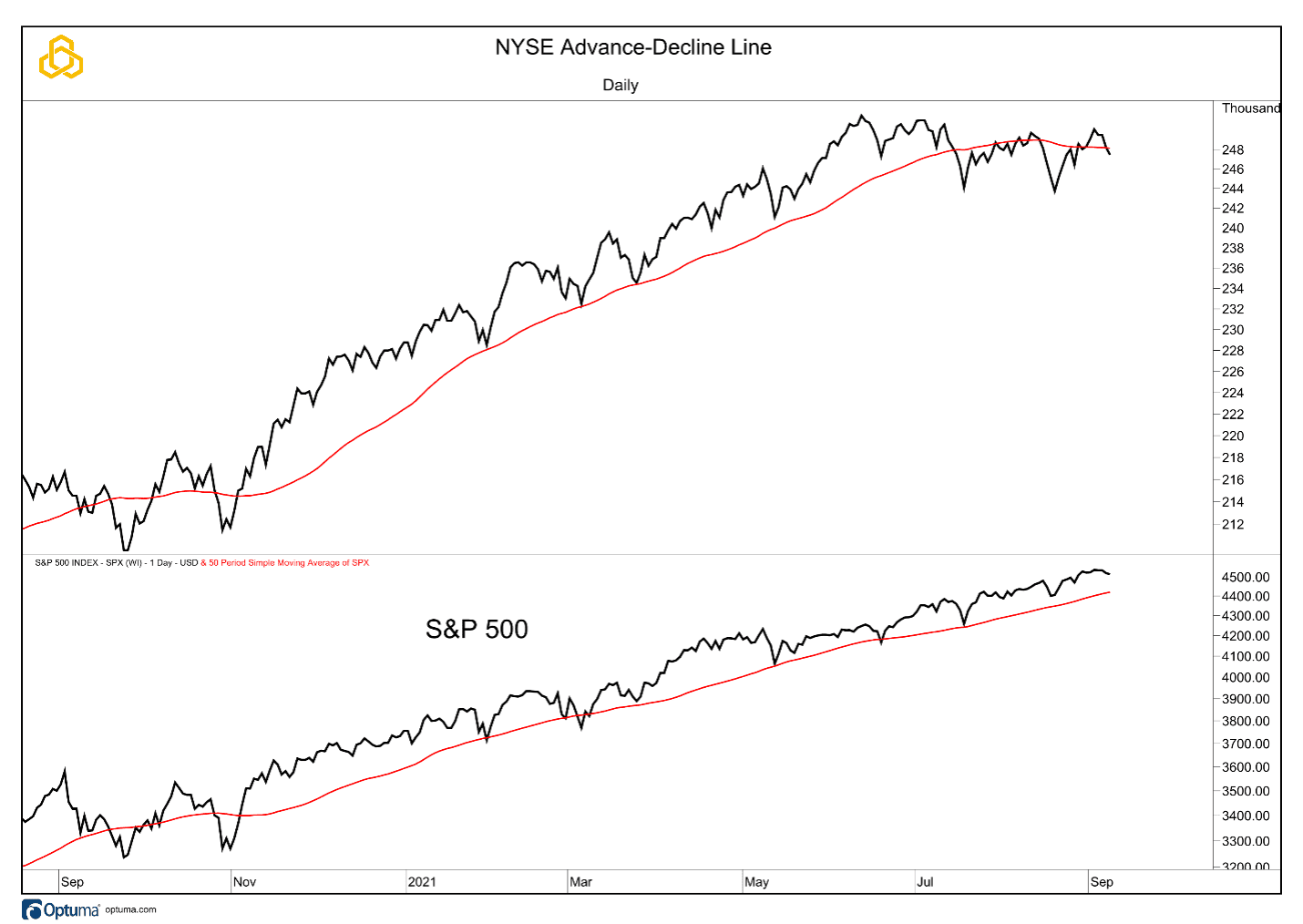
The NYSE’s Advancing – Declining Volume Line has met resistance at the declining 50-day moving average and the downtrend line from the June peak. Here too, there is a divergence between price and the indicator, which would be a concern should price break below near-term support levels.

The 5-day moving average of issues on the NYSE making new six-month lows has begun to turn higher over the past week. The 52-week metric is down slightly on a week-over-week basis, but the pace of the decline appears to be slowing. Bullish investors want to see these metrics consistently below the 1% mark.
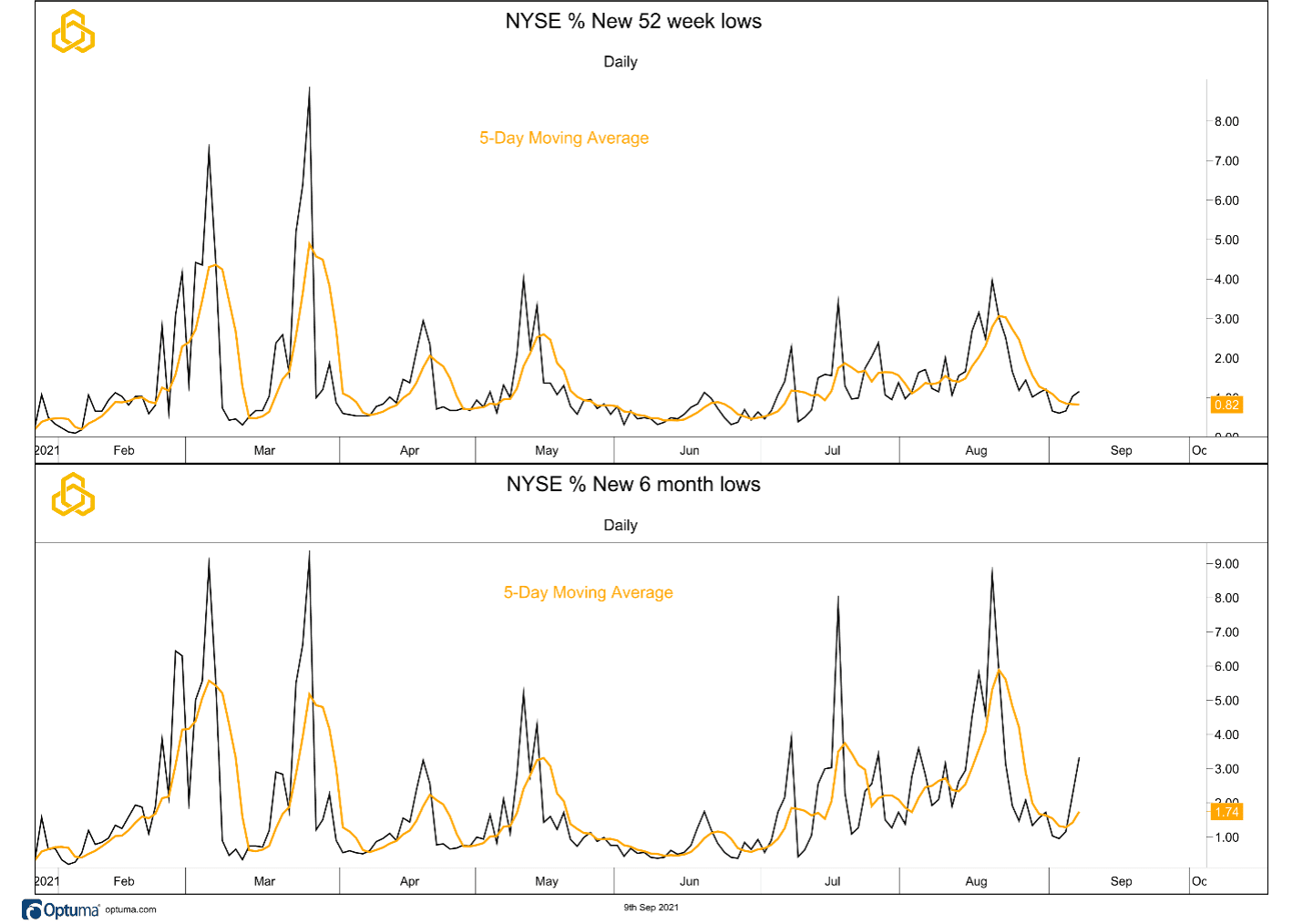
The 5-day moving average of the percentage of NYSE issues making new 52-week highs is beginning to turn down, though it is slightly higher than what was seen last week. The percentage of issues making new six-month highs is also higher than last week but is now heading in the wrong direction as well. A fast reversal from current levels would be a welcome development for equity bulls.
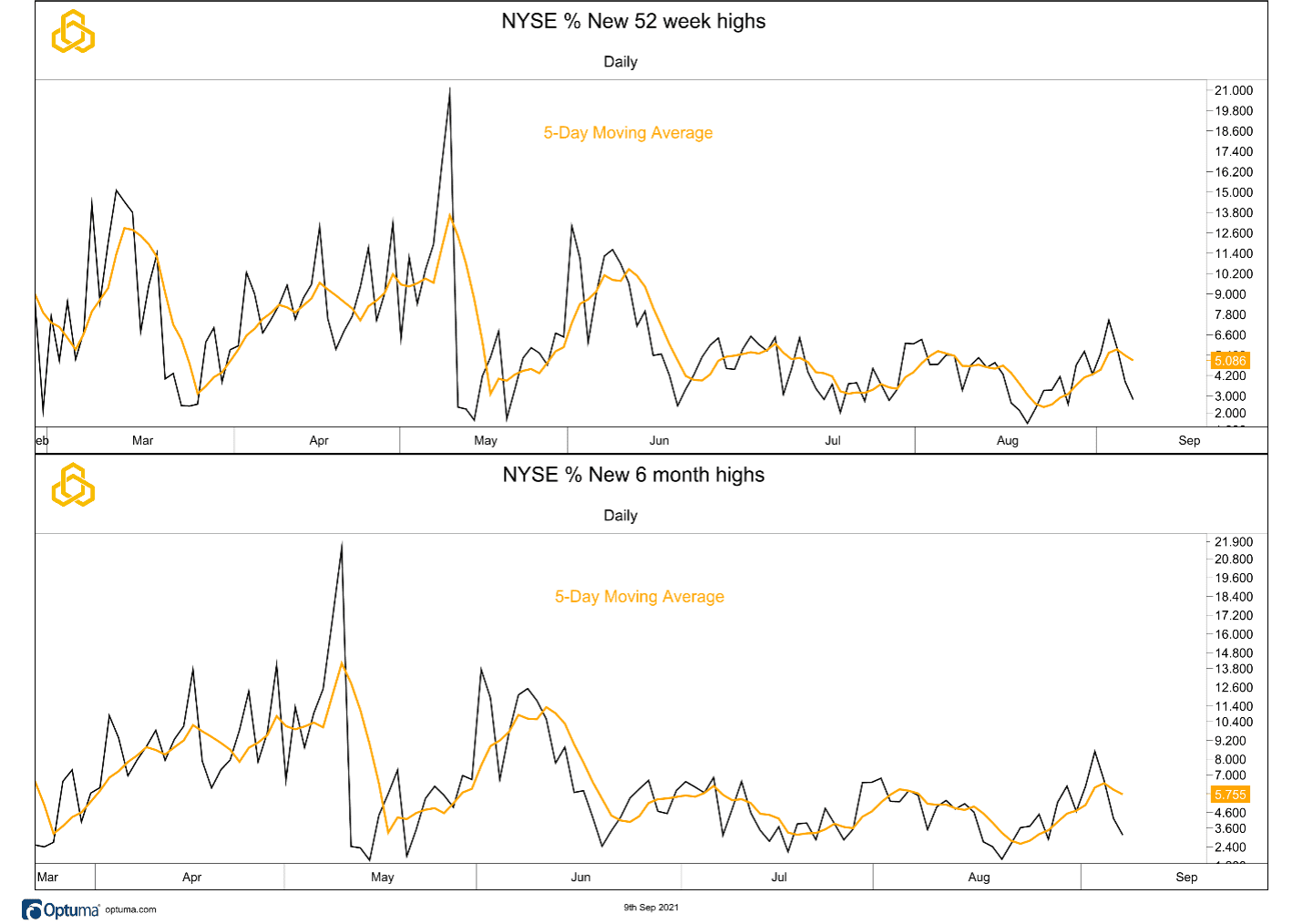
The percentage of issues on the NYSE that are trading above their respective 200-day moving averages continues to trend lower despite a persistent rise on the part of the S&P 500. The bearish divergence that has been playing out for most of 2021 remains firmly in place. Equity bulls want to see a recovery above the 60% level.
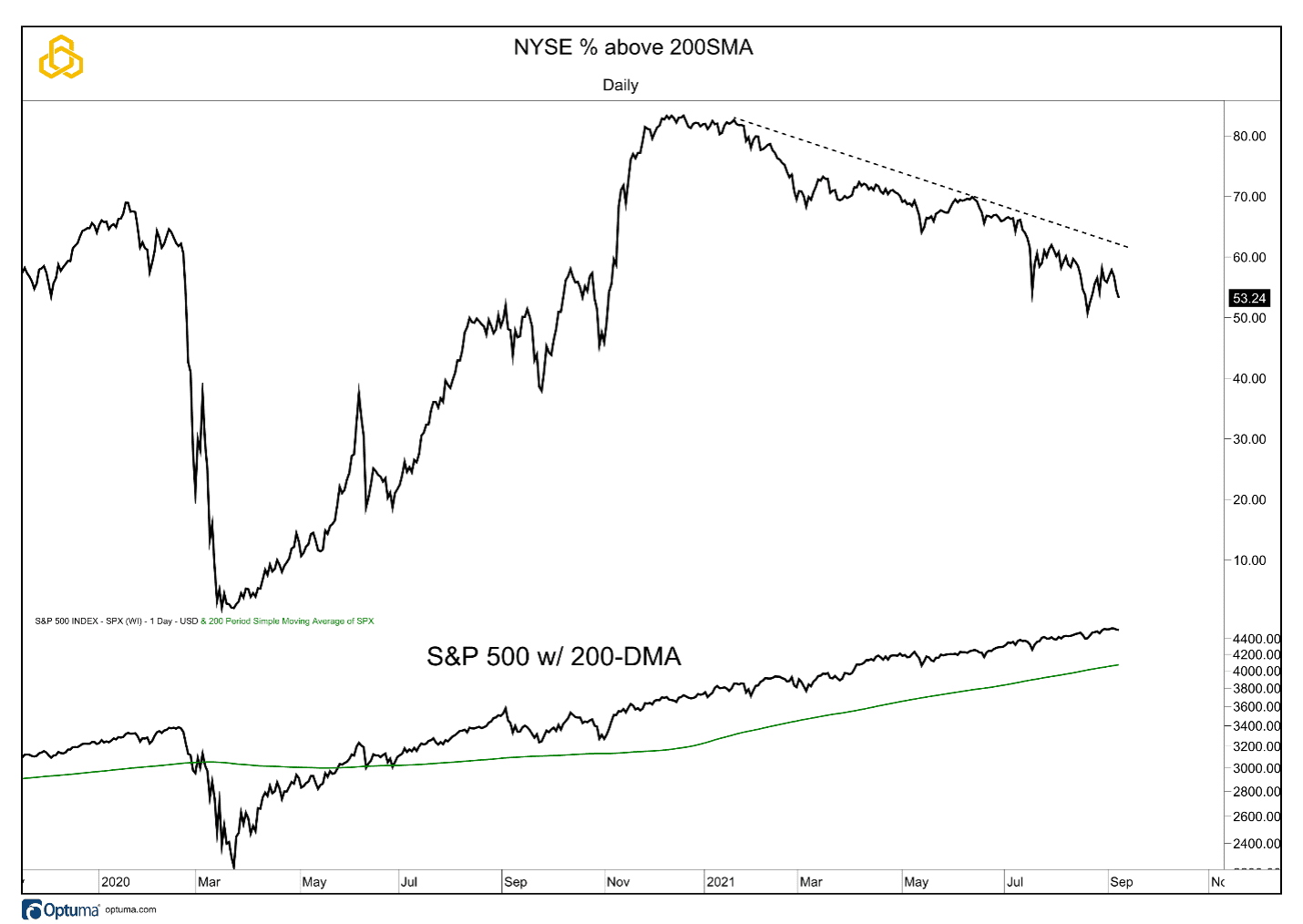
The percentage of NYSE issues trading above their own 50-day moving averages has moved lower over the past week, losing the near-term breakout level to trade back below the 50% mark. Thus far the series of higher highs, and higher lows, that began in July remains in place and we want to see a quick recovery to have confidence that the recent stalling activity for the index is not morphing into a bigger pullback.
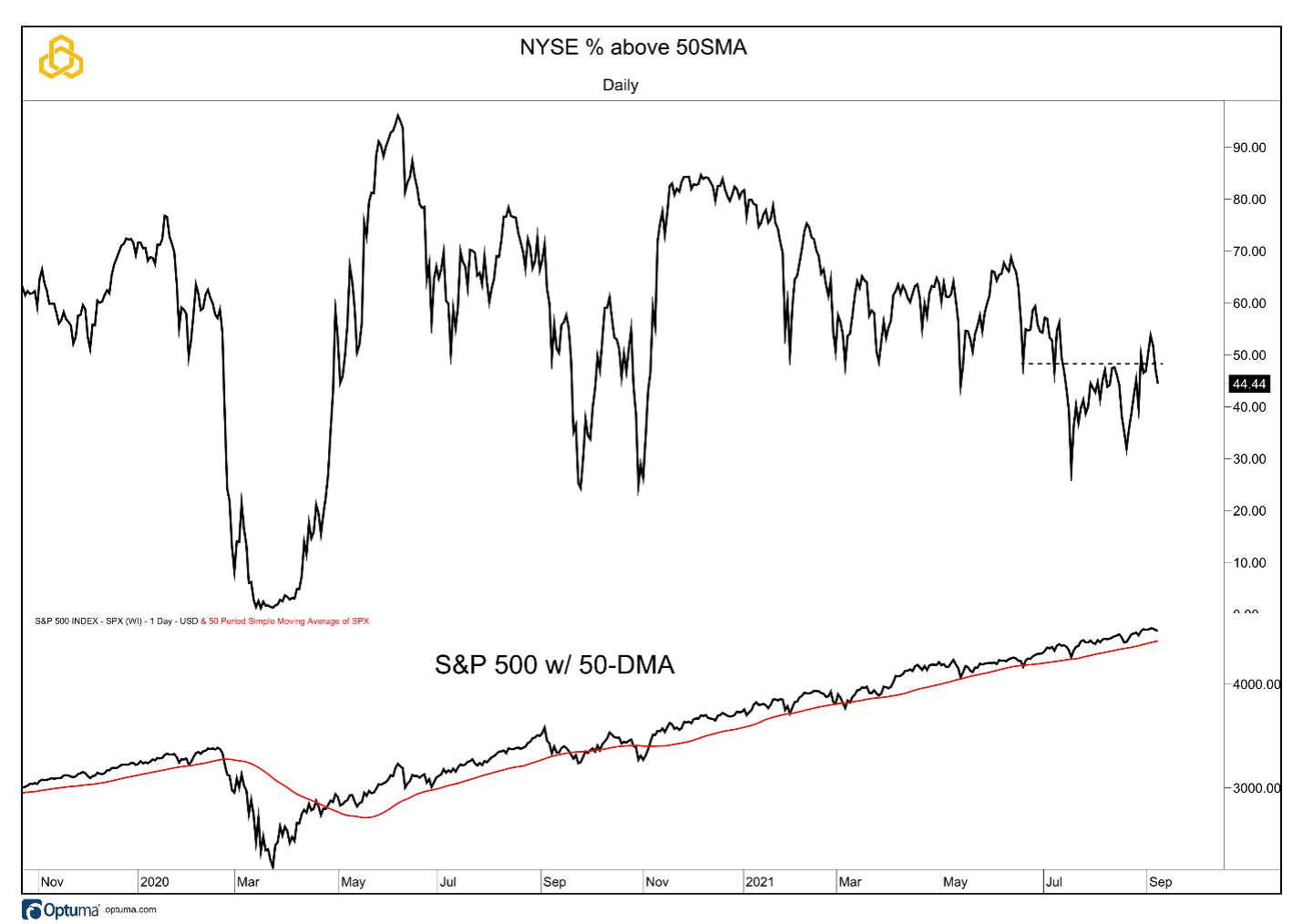
Like the 50-day moving average metric, the percentage of stocks trading above their respective 20-day moving averages has taken a turn to the downside this week while maintaining the uptrend that began in July. This is playing out as the S&P 500 is in the process of testing its own 20-day moving average which continues to rise. Recent tests have seen brief undercuts of the moving average that have quickly been reversed (arrows).
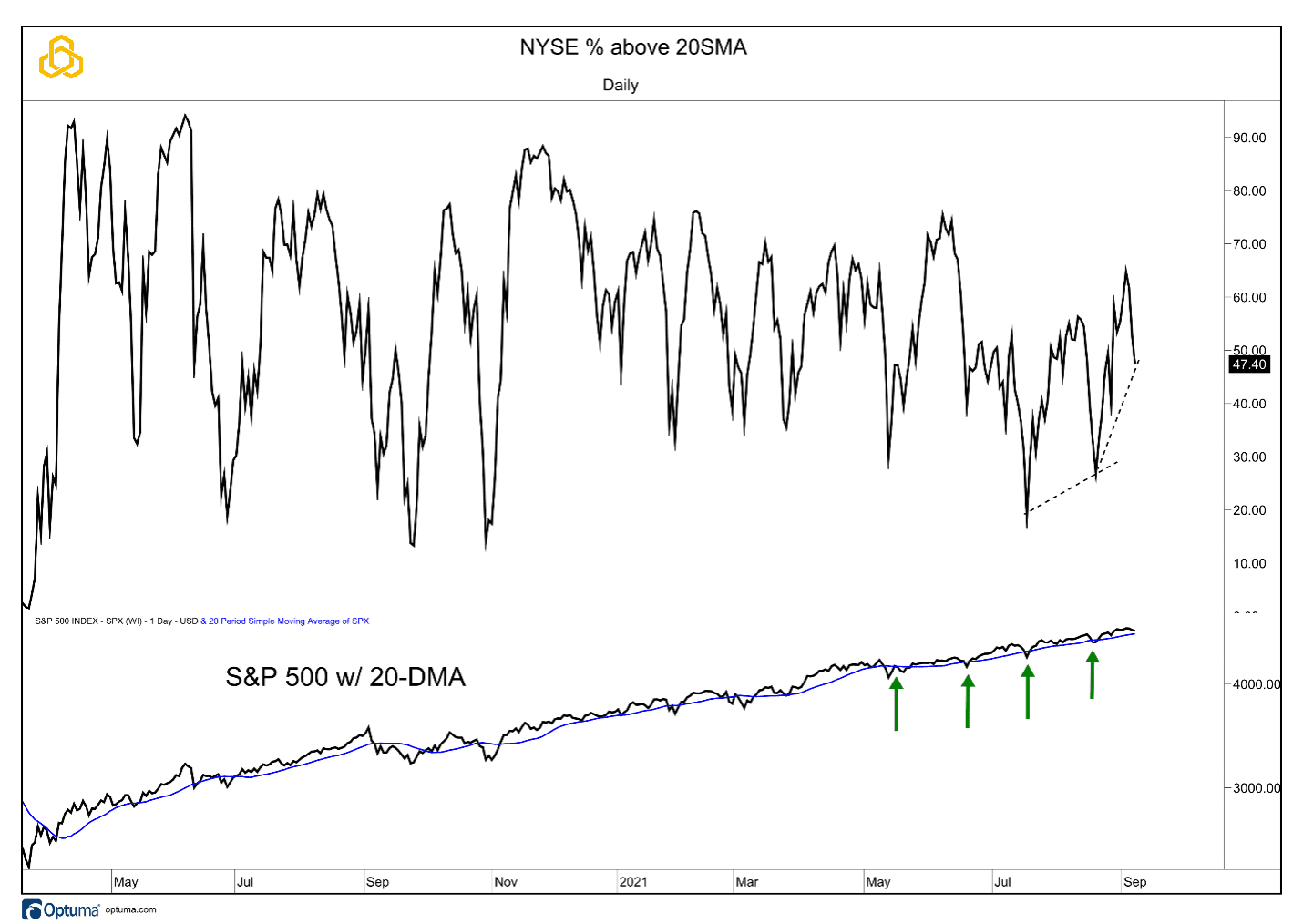
S&P 500 Breadth
Breadth metrics for the S&P 500 weakened over the past week as the index has declined for three consecutive days.
- Advance/Decline Line: Pulling back from record levels, above the 50-day moving average.
- Percent Above Their 200-Day Moving Average: 73% from 78% last week, downtrend in place.
- Percent Above Their 50-Day Moving Average: 58% from 65% last week.
- Percent Above Their 20-Day Moving Average: 48% from 61% last week.
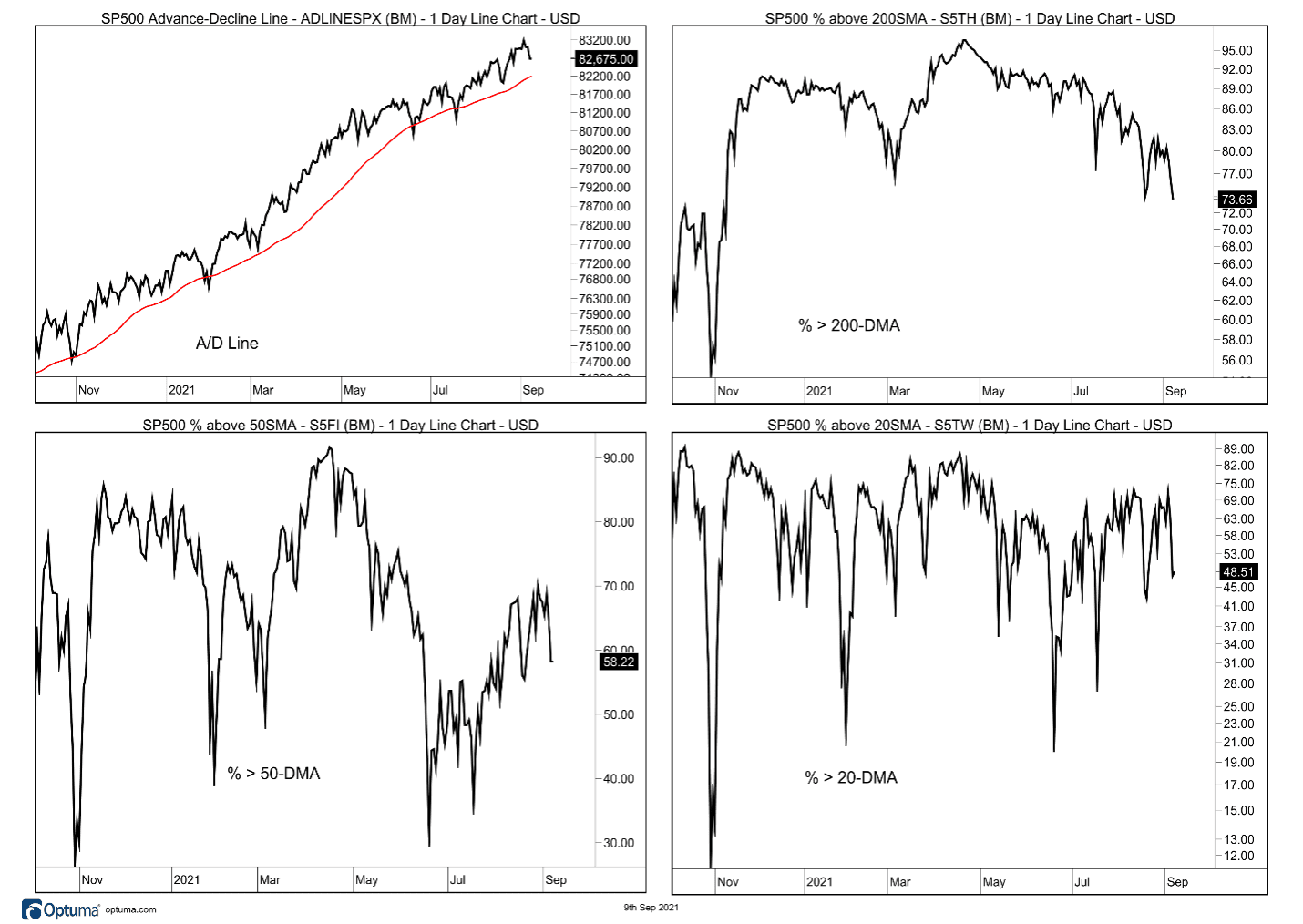
Looking at the trend metrics, the short-term (20-day) and intermediate-term (50-day) data points are making higher highs and higher lows. The 200-day metric is in a downtrend. Ideally, we want to see these datapoints “in gear” and confirming the price trend for the index.
Small Cap Breadth
Breadth metrics for the S&P 600 Small Cap Index have also declined over the past week.
- Advance/Decline Line: Fades from the 50-day moving average.
- Percent Above Their 200-Day Moving Average: 54% from 62% last week.
- Percent Above Their 50-Day Moving Average: 44% from 58% last week.
- Percent Above Their 20-Day Moving Average: 41% from 66% last week.
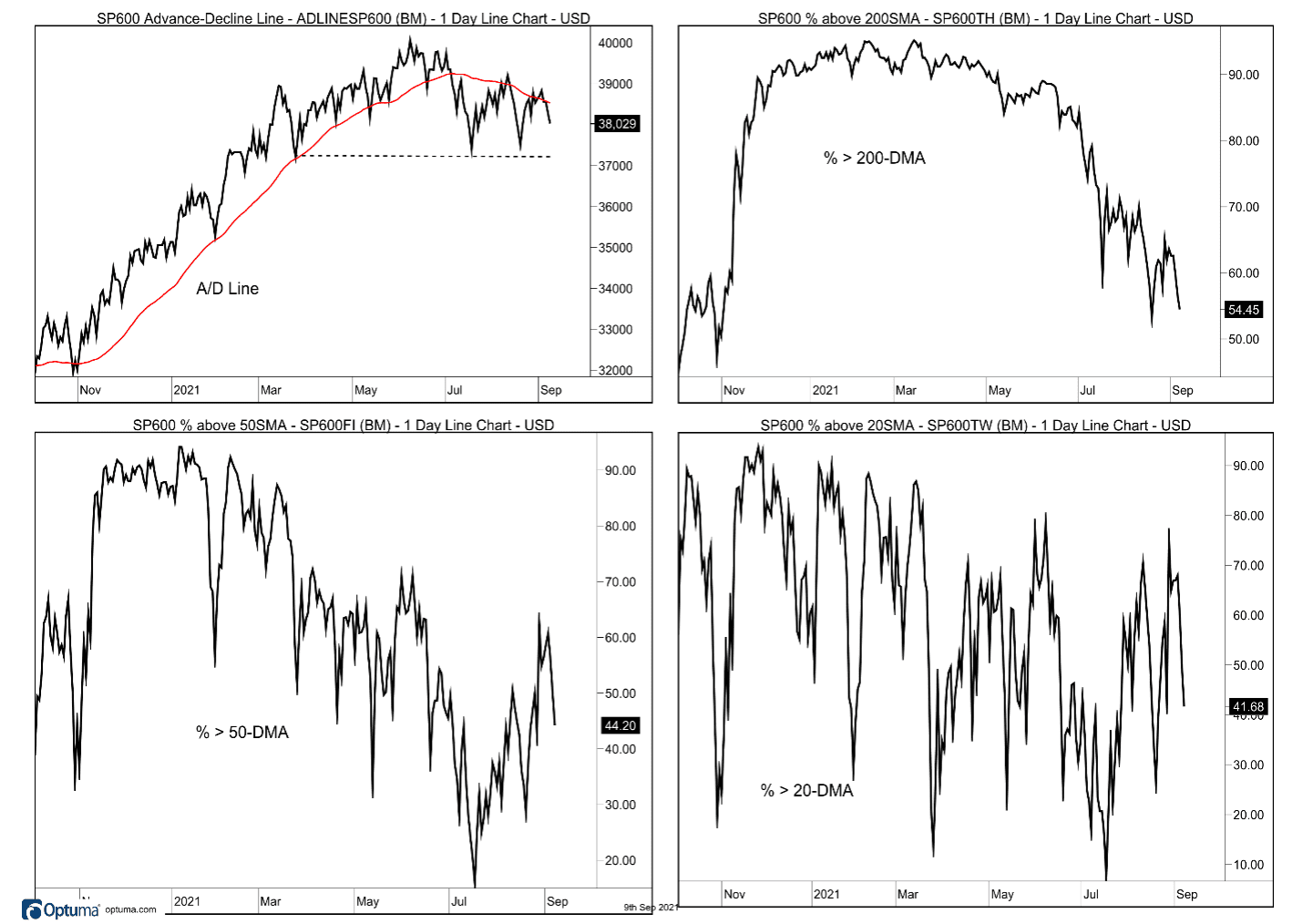
Higher highs and higher lows remain in place for the short and intermediate-term metrics.
Take-Aways
As the S&P 500 has declined over the past three days, breadth metrics have weakened. Short and intermediate-term trend measures remain in early uptrends, while long-term trend metrics continue to decline. We want to see these short and intermediate-term improvements begin to show up in the longer-term metrics to alleviate the divergences that have been in place for months. In the interim, support levels continue to hold, keeping current trends in place.
Disclosure: This information is prepared for general information only and should not be considered as individual investment advice nor as a solicitation to buy or offer to sell any securities. This material does not constitute any representation as to the suitability or appropriateness of any investment advisory program or security. Please visit our FULL DISCLOSURE page.
